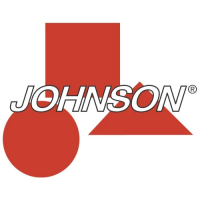MAINTENANCE HINTS
Crooked CuHing
-Fault
of
Machine? The Blade?
Or
Both?
Chec:k
these
Factors
1.
Tension. (See instructions
page
2)
2.
Has guide adjustment
been
altered
in
a futile attempt to make a worn
blade
cut straight?
See
guide adjustment.
3.
Is
machine excessively heavy?
See
Cutting Pressure.
4.
Are
pivot
bar
collars against
bed
so
head
is
not drifting side
ways?
5.
Are
cleaning brushes
in
good
contact with blade?
6.
Make
sure pivot
bar
turns
in
bed
and
not
in
side
_frames.
Is
It
the
Blade
?
If
the above items are
all
O.K., then
we
must suspect the blade. Here
is
how
t~
recognize a defective blade:
I.
If,
after
cut, the blade
is
plastered
to
the
side
of
the
cut and scrapes when raised up, this ·indicates
that
machine
wished
to
travel
in
vertical path but blade followed a false path due
to
irregular set, sharper side,
or
injury.
·
This
is
a typical
"out"
cut.
2.
_
If
blade stands way clear of stock as above it
is
an "in" cut.
i
A.
r-roper cutting bla.de
will
go through the stock with equal space on each side
of
the blade. A defective
bl..,de
w1l
lay over
to
one
s1de
or the other.
.;
. . ,
CAUTION-
Remember-
you
C4nnot make a defective blade cut straight by
adj~sting
the guides.
NEVER
START
A NEW
BLADE
ON
AN OLD CUT.
..
Remedies
for
Troubles
That
May
Develop
I.
BACK
OF
BLADE
BREAKING
OUT
PIECES.
Wheel Kant - blade may
be
riding
too
high on wheel
..,nd
is
scr4ping 4gainst flange.
Do
not change fac:tory
setting unless necess..,ry. See instructions on Page 3 for adjustment.
2.
BACK
OF
BLADE
SWEDGING OVER . .
Caused by loose blade, guides
too
far apart, soft blade, too
h~avy
cutting pressure or pressure
all
on
one guide,
3.
TEETH
STRIPPING
(A)
Brushes
should
be
dean
and square to blade.
Clogged
brushes
will
not remove chips
that
become welded to
point
of
tooth. · . . · ·
(B)
Multiple cutting
or
stacking -
be
sure
all
pieces
are
held securely as one loose piece
will
cause teeth
to
strip.
(C
Do
not slam blade down onto cut,
but
ease blade into
cut
until
there
is
sufficient bearing surface for the
teeth
to
bear
full
weight
of
the frame.
..
(D)
Always use
the
hydraulic
to
control descent
of
frame
when
cutting thin section material.
4.
CUTTING "IN" OR "OUT".
(A)
Set worn off one side
of
blade
due
to
hard
spot
in
material being cut.
(B)
Defective blade - Always try a new blade, properly tighti:!ned -before altering guides.
(C)
Be
sure blade
is
properly tightened. . :
(D)
A defective blade
will
not
cut
straight regardless
of
guide adjustment. ·
(E)
Too
much
pressure
on
blade - see "Cutting Pressure"
page
2.
Care
of
Hydraulic:
Frame
Control
Keep unit filled with mineral oil, viscosity I 00-150
at
I
oo·F.
Low
oil
supply
will
cause head
of
ma-
chine
to
become "bouncy" as air replaces
oil
under piston.
To
correct, remove air bleed screw
on
hydraulic
top,
fill
and then remove entire unit from machine.
Pull
piston
out
4"
with unit
in
upright
position, open valve and with unit
in
an
INVERTED
POSITION force piston rod back into cylinder.
Now,
with unit
in
norm•l position,
refill
and reinstall on machine.

